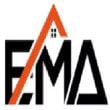obtain concrete interior condition in regular or concrete with congested
reinforcement, with an accuracy of ± 1 and 5 mm, respectively. This is well beyond what is achievable
with other current methods such as the pulse echo techniques using MIRA or
Ultrasound. In addition, because of its “photographic” quality can be used to investigate steel
corrosion and voids in reinforced concrete. This methodology has been successfully used in hundreds of
structures including bridges, buildings, bank treasuries, industrial establishments, silos and monuments.
Why need concrete corrosion tomography in damage assessment
The MIRA uses ultrasonic waves to build a 3D image of the features within a concrete pavement. It can be used to detect:
• Thickness: Concrete thickness estimation up to 3 feet deep with high accuracy
• Voids
• Delamination: Detection of cracking in the PCC layer or de-bonding between PCC layers
• Reinforcement/Dowel bars: Accurate estimation of reinforcement depth
• Joint diagnostics: Detection of concrete deterioration, dowel position, spalling, etc. at PCC joints.
EMA has been using the MIRA recently to detect joint activation and he says the device makes it very easy to detect whether a joint has deployed or not. Just place the device over the sawn joint and in 2 seconds it displays the ultrasonic image on the screen and saves the data internally for later processing on a laptop.
Uses of MIRA in Concrete Corrosion Detection
Concrete GPR Scan in Daytona, St. Augustine, Cocoa, Melbourne, and surrounding areas can locate rebar and post-tension cables within the concrete using Hilti PS 1000 state of the art GPR scan technology. Reinforcing steel locations are marked directly on the concrete surface to ensure safe and efficient drilling that will preserve the integrity of the structure and reduce the need for repairs or patching. This helps our clients conduct core drilling without accidents, injuries or delay. Concrete GPR Scan is also useful when preparing for a renovation that includes electrical outfitting, plumbing, fire protection services, drain installation, and ductwork.
In the case of delamination, the MIRA provides a few advantages over traditional methods. The current method for detecting delamination involves dragging a chain over the surface of the concrete and “listen” for hollow spots. That worked well, to some extent. With the MIRA however, the image generated can tell you exact depth, location and size of the delamination. Having that information about delamination, below the surface, can be very helpful.
In a recent test, Burnham discovered a delamination at a dowel bar, which was later verified by a core sample. He says he can do about 50 MIRA images in the time it takes to drill one core. The software stitches all the images together into a grid and allows the user to manipulate the image so you can look at the 3D rendering from every side.
Finally, the MIRA detects cracks in a concrete pavement that cannot be seen with the naked eye. Burnham will continue to test its capabilities through summer 2019. For example, he wants to see how soon after sawing a joint in a fresh concrete panel can the device be used to detect crack development within the joint. A recent report that included use of the MIRA to determine joint deployment was part of a conducted by a National Road Research Alliance (NRRA) member of the National Concrete Pavement Technology Center (CP Tech Center) at Iowa State University titled “Optimized Joint Spacing for Concrete Overlays with and without Structural Fiber Reinforcement”
CONCRETE GPR SCANING
Also crucial in the Concrete GPR Xray Scan Daytona imaging process is determining what’s in the concrete structure. This includes gauging the concrete thickness, what the rebar content is, its spacing and its elevation within the slab. This extensive, critical information helps our clients and their teams to understand the makeup of the concrete. we also can determine concrete covers over the rebar using state of the art equipment.
Concrete Corrosion Tomography Use in DETECTION AND LOCATIONS
We can also locate voids – air gaps between the sub-grade, dirt and the concrete slab-on- grade – hidden below concrete or asphalt surfaces. This degradation occurs over time due to compaction, pipe ruptures or erosion but is often undetectable on the surface. EMA Concrete GPR ground penetrating radar can help our clients locate these areas and – most important – avoid collapses.
COST OF Concrete corrosion Tomography
Concrete corrosion testing using MIRA is expensive due to its accuracy. The equipment is more expensive and a minimum of 2 operators is needed at all times. As a rule of thumb, concrete x-ray will cost double the hourly rate of GPR – although pricing by image may be more attractive for both parties. $150-$170 per image is fairly standard, combined with a mobilization charge of several hundred dollars. Night and weekend work is charged at 1.5 times standard rates which can lead to overtime rates too.

https://sites.google.com/view/structuralengineersorlando/
https://sites.google.com/view/new-condo-milestone-inspection
https://www.yelp.com/biz/ema-structural-forensic-engineers-orlando-5?adjust_creative=neeva
